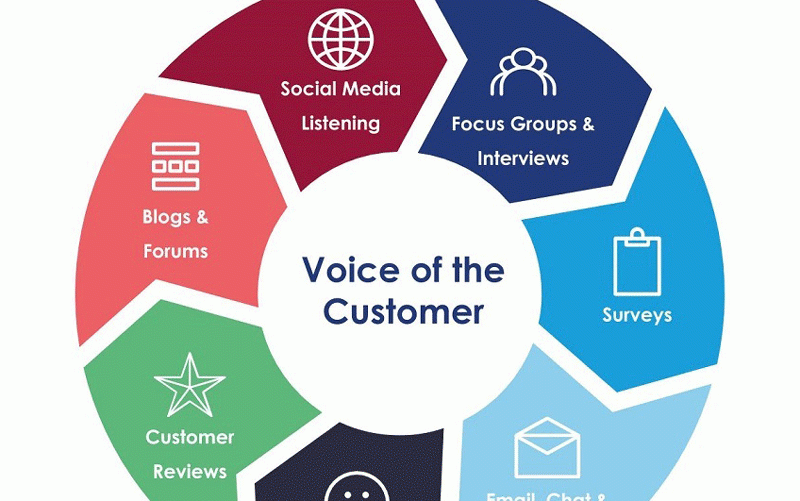
EVERY organisation knows that it has to do right by the customer with each interaction, otherwise it is doomed to fail.
Henry Ford famously said: “It is not the employer who pays the wages. Employers only handle the money. It is the customer who pays the wages.”
Once we internalise this, an organisation puts the customer at the heart of everything it does, how it is done and what it engages in. Before embarking on a transformation the organisation needs to know and understand what the customer wants.
Transformation is about adapting or changing to survive and thrive thereafter. Organisations that are attuned to their customers’ needs are market leading and market disruptors producing blockbuster products. Leading examples of this are Apple, Amazon and McDonalds. These organisations are famous for innovation and they continually reinvent (transform) themselves remaining relevant in the markets in which they operate. One of the things they excel at is understanding the heartbeat of the customer. They understand their customers intimately gathering data continuously via multiple sources and channels both formal and informal. This is the voice of the customer.
This is a primary discipline or capability every organisation must have. An organisation should be able to collate customer feedback and insights which can be leveraged in making business decisions. If this is not a discipline you have in your organisation, today is a good day to start. Given that the customers belong to you and you have a direct relationship with them, interacting with them on a daily basis — customer access is not your problem. The most important thing to do is to start getting feedback even in a rudimentary way initially. Why? Because you will gain new information about your customers that you didn't know yesterday, giving you the opportunity to do better for them tomorrow.
The customer journey
Before asking the customer what they want we need to understand and document the customer’s journey. It maps the customer’s end-to-end experience of interacting with your organisation when buying a product or a service. It is an opportunity to walk in the customer’s shoes. In doing so we identify the customer touchpoints (each interaction) in the process and the moments that matter (moments of truth). The moments that matter are the most important interactions to the customer and are the points at which a customer forms an opinion of your product/service. It can also be a decision point on whether to carry on with the process/transaction or exit.
When we find out what is most important to our customers, we must take notice and design our processes to deliver a superior experience that meets or exceeds their expectations. Looking at a customer visit to the supermarket the moments that matter could include ease of finding a parking spot, cleanliness and a calm ambience, product availability, length of queues at the till and helpfulness of staff.
- Zim gets Little Mister, Miss Universe licence
- Mister & Miss Zim to empower teen models
- Beach volleyball team preps for tourney
- Business opinion: Building brand loyalty
Keep Reading
These are the points at which the customer is forming an opinion of the organisation and what should be measured to determine if customer expectations are being met or not.
Voice of the customer
Once we’ve ‘walked’ in the customer’s shoes — we simply ask them what they want. Questions can be structured based on the customer touchpoints, paying special attention to the moments that matter. A simple Word/Excel document or Google forms which is freely available on Google mail accounts can be used.
There are numerous online tools such as Survey monkey and Type form which are free but with additional survey functionality a subscription is required. Further in-depth guidance on using various data collection methods and tools can be readily sourced online.
What is key is collecting enough feedback to draw robust conclusions which inform business decisions. Considerations such as sample size become important but again starting simply – find out the number of customers within your customer universe and if you have customer segments know how many fit in each distinct segment. Then target to survey at least 10%.
Timebox the data collection exercise to make data comparable and relevant for drawing useful conclusions from. Subject to the number of customers to contact and resources available for execution data collection duration can last 2–8 weeks. This is merely guidance from experience and not a hard and fast rule. Following data analysis recommendations are made to senior management who will make decisions determining the need for change and thereafter the extent of change required. Validating customer requirements – triangulate data An important aspect that is often overlooked once data is collected and analysed is data validation. In the absence of statistically analysed data, it is very important particularly where the customers highlighted an issue such as long queues during peak periods.
This must be validated to determine whether this is evidenced and a sizeable problem by conducting in-store measurements/observation over a period of time. If the issue highlighted is delays at check out, at peak times we study the length of queues, the number of open tills, staff availability, staff visibility and customer throughput rate.
By triangulating the data we confirm that the issues raised by the customers are the most prevalent and most important most and that addressing them will have the biggest impact on customer satisfaction and subsequently the organisational performance. Internal processes deliver to voice of the customer Once the customer requirements are defined it is swiftly followed by a review of internal business processes which interface with the customer journey. The process review may discover the business processes are not optimally designed to deliver the level of service expected as described by the ‘Voice of the Customer’. It is leadership’s responsibility to determine whether a radical redesign of the end-to-end processes is required and if so, a transformation programme is initiated. Knowing your customers intimately means designing internal business processes that will deliver on each of the customer expectations with every interaction with your organisation.
- Nyaradzo Muguti is a strategy and transformation consultant, a Lean Six Sigma Black Belt practitioner who has successfully initiated, led and delivered transformation programmes across various industries and global blue-chip organisations. — +263 783 533938, [email protected] , LinkedIn https://www.linkedin.com/in/nyari-muguti-24998017/










